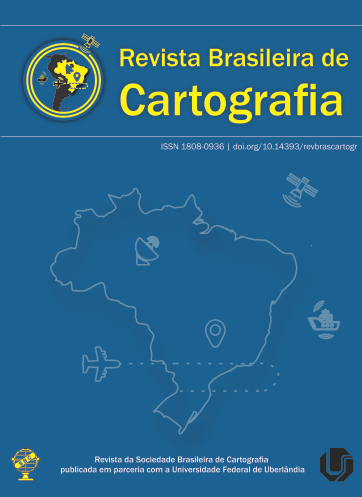Low-cost digital elevation model for marine protected areas
Main Article Content
Abstract
Digital Elevation Models (DEM) are essential for a better comprehension of different terrains, as they represent the original geomorphology, and through processing, such as color classification of data, shaded relief, slope, direction of faces and curvature, allows for a range of transdisciplinary interpretations of great value to the management of conservation areas. Mona Cagarras is the chosen spatial area and has positive and negative altimetry amplitudes. For such a fully protected Conservation Unit (CU), remote sensing mapping is an adequate tool for data acquisition, causing no direct interference to the sensitive environment. Existing topographic and bathymetric data do not attend management’s needs for precision, as the altimetric data are scattered and little detailed. The bathymetric DEM was produced from a field survey, using a commercial echo sounder attached to a GPS, with the modeling of the continuous surface done by the Topo to Raster interpolator. For the topographic DEM, three methodologies have been tested: SRTM 30m, ASTER GDEM and survey-based stereophotogrammetry. The resulting DEMs were compared to 23 ground control points and analyzed for their appearance. The stereophotogrammetry best caught the altimetric amplitudes and the winding relief, and proved to be more similar to the original geomorphology. The final DEM corresponds to the sum of the bathymetric DEM and stereophotogrammetrical topographic DEM. The interpolator Topo to Raster generated a submetrical RMS of 0.98m. The large range of bathymetric detail is of huge importance in marine protected areas, as they are the basis to the knowledge of ecosystems. This paper presents a low cost methodology and has potential to become widely applied to aid management in marine protected areas.
Downloads
Metrics
Article Details
Authors who publish in this journal agree to the following terms:
- Authors retain copyright and grant the journal right of first publication with the work simultaneously licensed under a Creative Commons Attribution License that allows others to share the work with an acknowledgment of the work's authorship and initial publication in this journal.
- Authors can enter into separate, additional contractual arrangements for the non-exclusive distribution of the journal's published version of the work (e.g., post it to an institutional repository or publish it in a book), with an acknowledgment of its initial publication in this journal.
- Authors are permitted and encouraged to post their work online (e.g., in institutional repositories or on their website) before and during the submission process, as it can lead to productive exchanges, as well as earlier and greater citation of published work (see "The Effect of Open Access").





